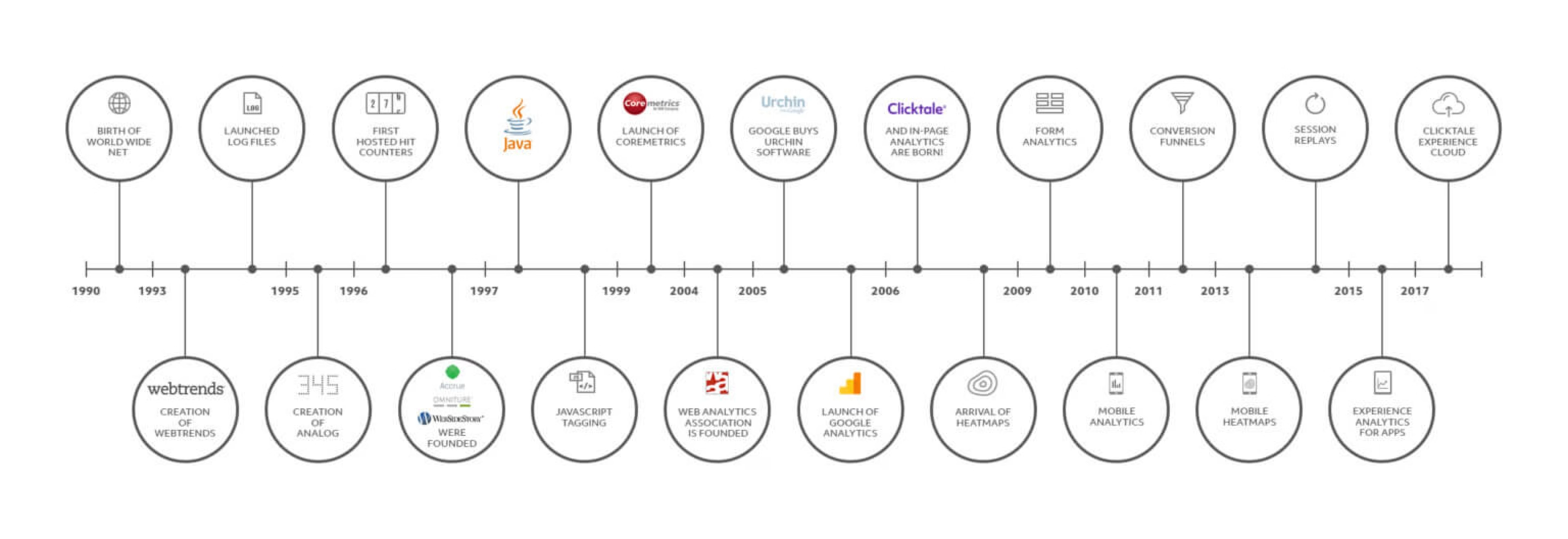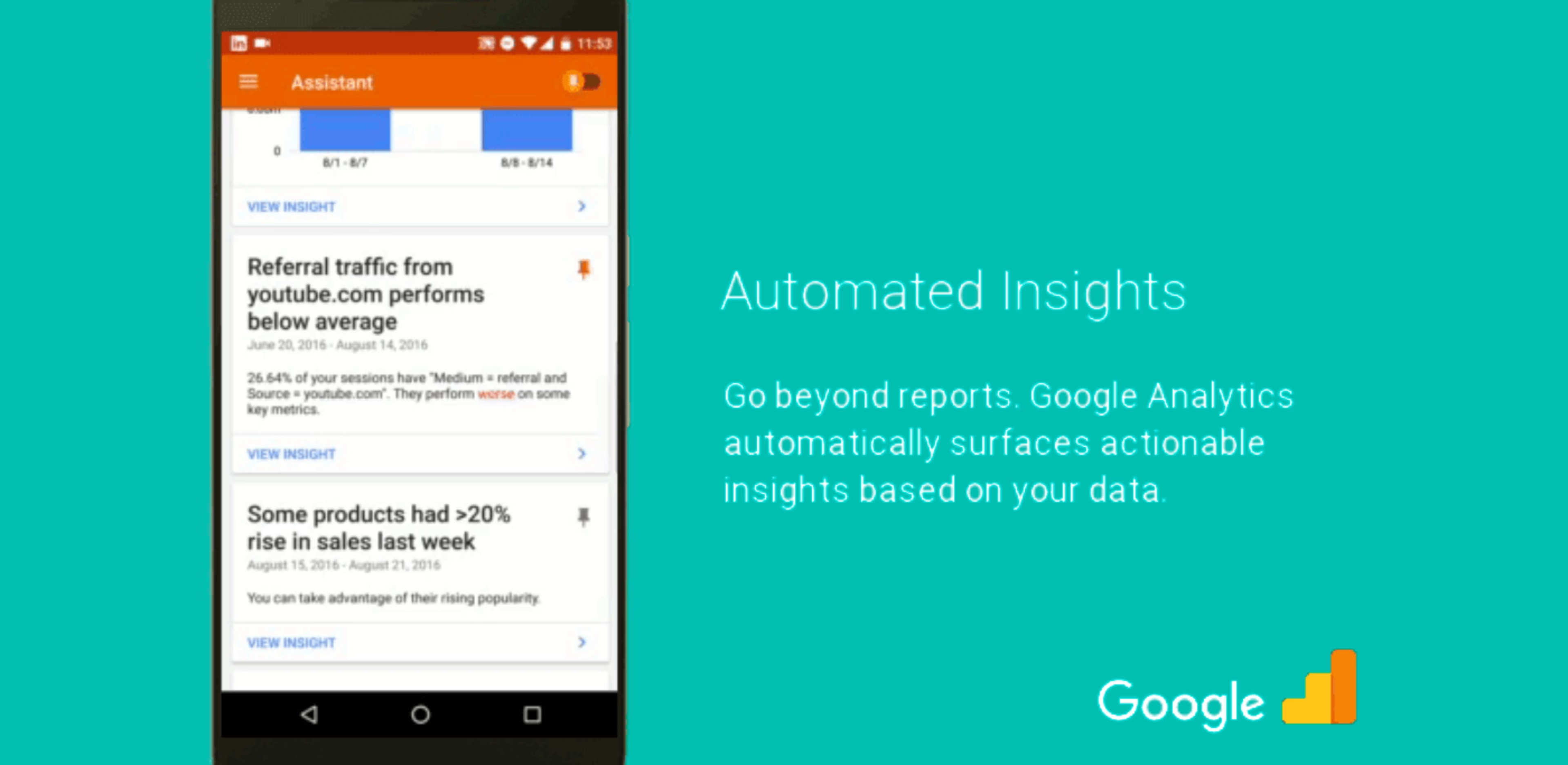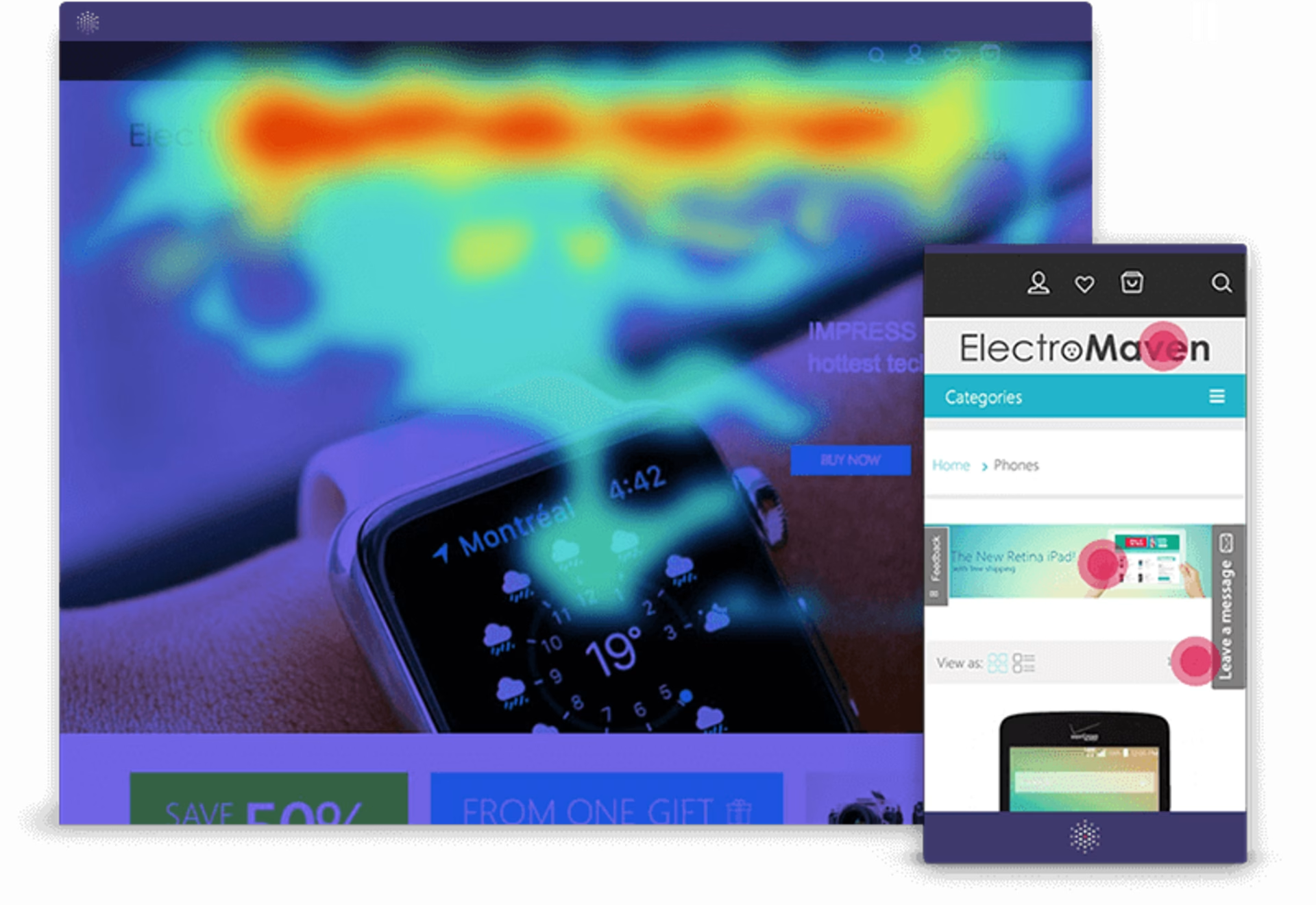Almost 30 years since its inception, the World Wide Web has come a long way. Here, at Contentsquare, we wanted to take a moment to reflect on the pioneering efforts of web optimization, the trends in web analytics, and the building blocks of our present-day web analytics solutions.
We’ve put together a brief history of web analytics: a timeline of key events in the web analytics industry that takes us up to where we are today. These developmental milestones are part of an ongoing collective effort to make the Internet a better place for a global community of users.
1990 – THE BIRTH OF THE WORLD WIDE WEB
The Internet is essentially a constant dialogue of HTML code, flowing back and forth between a web user and a web server. On Christmas Day 1990, Sir Tim Berners-Lee successfully implemented the first dialogue of this kind, creating the Internet as we experience it today.
1993 – LOG FILES, CREATION OF WEBTRENDS
Each time a certain HTML element is requested by a visitor, it is called a “hit” and is recorded into a log file. A hit may include text on a web page, an image, sound or a video file. However, during its modest beginnings, the Internet was comprised of mostly static pages limited to text and links. Therefore, when a page received a hit by a visitor, it was assumed that they were engaging with the entire contents of the page. As web usage increased, website owners became preoccupied with this metric.
The development of log file analysis paved the path that led to the beginning of commercial web analytics, which was marked by the founding of WebTrends in 1993.
1995 – CREATION OF ANALOG
Dr. Stephen Turner created Analog — the first log file analysis program to be completely free of charge. Until this time, web analytics could only be understood by tech teams, but Analog made the reports generated through log files more comprehensible to online business owners, with clear documentation and visual graphs. Finally, web analytics could be used by marketing professionals, as well.
1996 – HIT COUNTERS
Web-Counter, the first widely used hosted hit counter service, was born. This sparked the trend of odometer-style hit counters being displayed on website landing pages.
Accrue, Omniture, and WebSideStory were founded.
1997 – JAVASCRIPT TAGS
As webpages began to include visuals and other elements besides text, it became clear that the number of hits a server accumulated no longer represented the number of pages requested.
Javascript tagging became the new method of data collection to accurately report on diverse web traffic and trends. This is still the most widespread method of data collection today.
2004 – THE CREATION OF THE WEB ANALYTICS ASSOCIATION (WAA)
Web analytics became more established as an essential tool for web optimization, providing increasingly complex solutions that reported massive amounts of data. The Web Analytics Association (WAA), now known as the Digital Analytics Association, was born.
2005 – GOOGLE BUYS URCHIN & LAUNCHES GOOGLE ANALYTICS
Google Analytics quickly became the most widely used web analytics service on the market. Focusing heavily on quantitative analysis, it tied in directly with Google’s other web marketing offerings.
2006 – THE BIRTH OF CLICKTALE (NOW CONTENTSQUARE) & IN-PAGE ANALYTICS
The launch of In-Page analytics allowed website owners to see everything their visitors did on a webpage. Video session playbacks of visitor behavior delivered qualitative usability and conversion-based data, while heatmaps and form analytics provided online businesses with both quantitative statistics and qualitative behavioral data about website visitors.

Clicktale (now Contentsquare) was established to offer solutions for businesses seeking conversion rate optimization, improved customer experience and increased user engagement through data sourced from analytics tools, such as mouse tracking.
2012 – UNIVERSAL ANALYTICS
Google launched Universal Analytics, meaning that users could be tracked across multiple devices and platforms through user IDs. Beyond that, offline behavior began to be monitored, and customer data became richer with the addition of demographic and other information.
Google Analytics for mobile apps was also launched, supplying app analytics via SDKs for Android and iOS. The world of web analytics grew to include the now standard mobile analytics.

2016 – MACHINE LEARNING ON MOBILE
Google Analytics incorporated machine learning into its app analytics, giving marketers smarter insights on the go. This enabled a streamlined mobile Google Analytics experience, showing more relevant metrics, with real-time monitoring. This was a turning point in the analytics industry.

2017 – THE CLICKTALE (NOW CONTENTSQUARE) EXPERIENCE CLOUD
By combining cognitive computing, machine learning and psychological research, the Clicktale (now Contentsquare) Experience Cloud was launched to solve critical digital questions for enterprises and enable them to provide top-quality customer experience. The new platform helps businesses better understand customer intent and behavior, and quantify impacts in order to more efficiently prioritize optimization tasks. This is made possible through the use of intuitive workflows and visualizations. The Clicktale (now Contentsquare) Experience Cloud pushes new frontiers, synthesizing complex behavioral patterns based on millisecond-level actions.
What's Next?
Web and app design are heavily influenced by analytics: you wouldn’t dream of designing your websites or apps without A/B testing and tweaking. Now, as the development of UX and UI is done hand in hand with derived insights from web analytics, this bond becomes ever stronger. The future is about optimizing this relationship as well as optimizing the insights accrued, in order to deliver maximum satisfaction to both customer and enterprise. Machine learning and cognitive computing are the focus of current web analytics evolution, and analytics providers continue to innovate in the field.
We at Contentsquare are proud to be a part of this ever-evolving industry, and will continue to expand the role of web analytics in the years to come.
REFERENCES
https://en.bricebottegal.com/definition-history-web-analytics/
https://www.brighthub.com/internet/google/articles/76256.aspx#ixzz15FSZVA5r
https://www.theedifier.com/blogging-blogger/server-logs-hit-counter-web-statistics.php
Clicktale was acquired by Contentsquare in 2019. Since then, tools and features mentioned in this blog may have evolved. Learn more about our Experience Intelligence Platform.

![[Visual] Contentsquare's Content Team](http://images.ctfassets.net/gwbpo1m641r7/3IVEUbRzFIoC9mf5EJ2qHY/f25ccd2131dfd63f5c63b5b92cc4ba20/Copy_of_Copy_of_BLOG-icp-8117438.jpeg?w=1920&q=100&fit=fill&fm=avif)